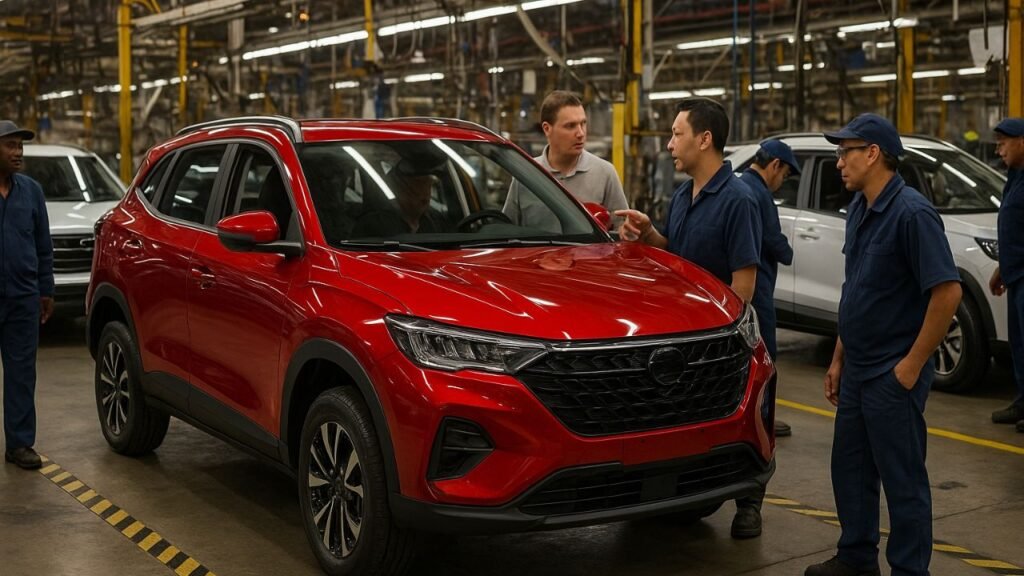Chinese Carmakers – South Africa’s automotive sector is undergoing a transformative shift as it looks eastward to China for investment, innovation, and industrial revitalization. With the country aiming to expand its local vehicle production capacity and reduce dependency on traditional Western manufacturers, Chinese carmakers like Chery, BYD, and Haval are increasingly becoming key players. The growing collaboration comes at a time when South Africa’s economy is in need of job creation and manufacturing growth. These partnerships not only bring in foreign direct investment (FDI) but also enable skill development and technology transfer—vital for building a globally competitive auto industry. As Chinese automakers gain popularity among South African consumers for their affordability and tech-savvy features, the momentum continues to grow. The South African government, through policies like the Automotive Production and Development Programme (APDP) and special economic zones, is actively creating a favourable environment for foreign investors. This evolving dynamic is also sparking online buzz, with platforms like Google Trends reflecting a surge in interest around Chinese vehicles.

Chinese Carmakers Expand Footprint in South African Market
Over the past few years, brands such as Chery and Haval have seen exponential sales growth in South Africa. Their winning combination of aggressive pricing, modern design, extended warranties, and electric vehicle (EV) variants has made them increasingly competitive. Chery South Africa, for instance, recently opened its local parts distribution centre, reducing delivery delays and boosting after-sales service. Similarly, Haval’s Jolion and H6 SUVs are capturing a sizable share of the urban family car segment. The introduction of electric models like the BYD Atto 3 and Ora by Great Wall Motors is also aligning with South Africa’s transition toward e-mobility. These developments are not only transforming consumer options but also creating new dealership and logistics jobs across provinces.
Local Manufacturing: A Core Strategy for Economic Growth
South Africa’s Department of Trade, Industry and Competition (DTIC) has prioritized local vehicle assembly and component manufacturing as part of its economic recovery and job-creation plans. By encouraging local assembly plants, the government aims to increase local content and reduce import dependency. Chinese firms are responding by either announcing joint ventures or expressing interest in setting up new factories. BAIC, for example, already operates a multi-billion rand assembly plant in the Eastern Cape, which has generated thousands of direct and indirect jobs. The possibility of other Chinese players following suit could further rejuvenate South Africa’s aging industrial zones. Moreover, integrating local suppliers and small businesses into the manufacturing value chain ensures wider economic participation. This manufacturing push also dovetails with green energy goals, with some companies proposing solar-powered or low-emission assembly lines.
Policy Support and Trade Agreements Boost Industry Confidence
South Africa’s policy environment has been instrumental in attracting Chinese investment. The APDP2 scheme offers incentives for manufacturers meeting local content and export benchmarks. Additionally, the African Continental Free Trade Area (AfCFTA) opens up broader export opportunities for locally assembled vehicles, making South Africa a potential export hub for right-hand-drive cars. Through bilateral cooperation and platforms like BRICS, the two countries continue to strengthen economic ties. As noted in recent diplomatic forums, infrastructure, auto, and green economy projects have been listed as mutual priorities. This policy synergy encourages long-term commitments by foreign automakers and signals investor confidence in the country’s automotive ecosystem.
Digital Buzz Reflects Rising Consumer Interest
The digital footprint of Chinese car brands in South Africa is surging, driven by viral social media reviews, trending hashtags, and YouTube influencers highlighting the value-for-money aspect. Platforms like Google Trends and TikTok are showing spikes in searches for BYD, Chery Tiggo, and Haval Jolion models. The rise of digital content creators reviewing Chinese vehicles is also reshaping public perception, especially among young car buyers. Online retail platforms and finance apps are making it easier than ever to compare models, calculate EMIs, and book test drives. This digital shift is not just a marketing trend—it reflects a broader generational change in how consumers approach vehicle purchases. As Chinese carmakers deepen their engagement with South African audiences, from showroom launches to localized social media campaigns, their visibility and trust factor continue to rise.








